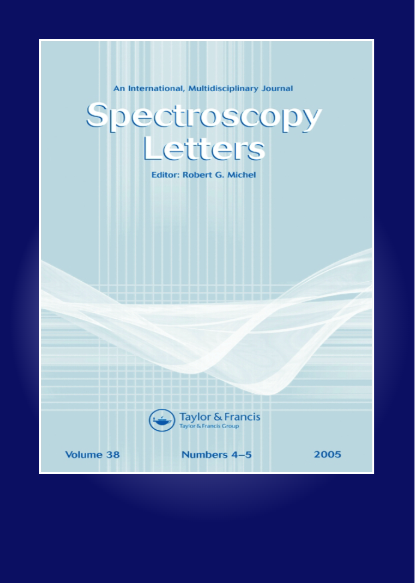Soybean yield estimation based on hyperspectral technology under water stress
IF 1.6
4区 化学
Q3 SPECTROSCOPY
引用次数: 0
Abstract
AbstractJindazaohuang No. 2 was selected as the test material to analyze the law of yield change under different water stress conditions. Through spectral monitoring of soybean canopy height under different water stress treatments, the rule of yield variation was explored and the response rule of canopy spectral reflectance to water stress was studied. At the same time, successive projections algorithm is used to extract the characteristic band, and the multiple linear regression monitoring model based on the soybean yield characteristic band is constructed. The results showed that the higher the degree of water stress, the lower the yield of soybean is basically. The canopy spectral reflectance is significantly related to yield of soybean, the coefficient of determination R2 of the successive projections algorithm-multiple linear regression model 41 days after construction was 0.791. The model test results are significant and the fitting effect is good. The research found that it is feasible to use hyperspectral technology to monitor the growth and yield of soybean under water stress quickly and nondestructively.Keywords: Canopy spectral reflectancesoybeanthe droughtwater stressyield Disclosure statementNo potential conflict of interest was reported by the author(s).Additional informationFundingThis work was supported by the Basic Research Program of Shanxi Province [202203021212188, 20210302123411], the Higher Education Project of Scientific and Technological Innovation in Shanxi Province [2021L444], the Higher Education Reform and Innovation Project of Shanxi Province [J20231108], the Research topic of postgraduate education and teaching reform [SYYJSJG-2176], the College Students' Innovative Entrepreneurial Training [20230916], and "1331 Project" Service Basin Ecological Governance Industry Innovation Discipline Cluster Construction Project of Shanxi Province [2021 (4)].水分胁迫下基于高光谱技术的大豆产量估算
摘要以金大枣黄2号为试验材料,分析不同水分胁迫条件下产量变化规律。通过对不同水分胁迫处理下大豆冠层高度的光谱监测,探讨了产量变化规律,研究了冠层光谱反射率对水分胁迫的响应规律。同时,采用逐次预测算法提取特征波段,构建基于大豆产量特征波段的多元线性回归监测模型。结果表明,水分胁迫程度越高,大豆产量基本越低。冠层光谱反射率与大豆产量呈显著相关,构建41 d后逐次预测算法-多元线性回归模型的决定系数R2为0.791。模型试验结果显著,拟合效果良好。研究发现,利用高光谱技术快速、无损地监测水分胁迫下大豆的生长和产量是可行的。关键词:冠层光谱反射率大豆干旱胁迫披露声明作者未报告潜在利益冲突。项目资助:山西省基础研究计划项目[202203021212188,20210302123411],山西省高等教育科技创新项目[2021L444],山西省高等教育改革创新项目[J20231108],研究生教育教学改革研究课题[SYYJSJG-2176],大学生创新创业训练研究课题[20230916],山西省“1331工程”服务流域生态治理产业创新学科集群建设项目[2021(4)]。
本文章由计算机程序翻译,如有差异,请以英文原文为准。
求助全文
约1分钟内获得全文
求助全文
来源期刊

Spectroscopy Letters
物理-光谱学
CiteScore
2.90
自引率
5.90%
发文量
50
审稿时长
1.3 months
期刊介绍:
Spectroscopy Letters provides vital coverage of all types of spectroscopy across all the disciplines where they are used—including novel work in fundamental spectroscopy, applications, diagnostics and instrumentation. The audience is intended to be all practicing spectroscopists across all scientific (and some engineering) disciplines, including: physics, chemistry, biology, instrumentation science, and pharmaceutical science.
 求助内容:
求助内容: 应助结果提醒方式:
应助结果提醒方式:


